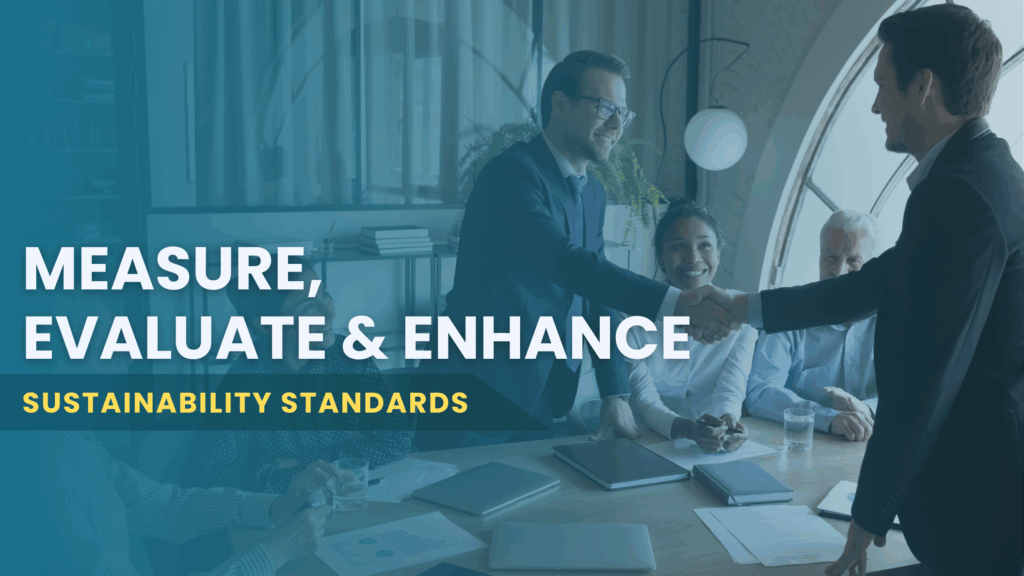Enhancing Organizational Performance with ESG 14 S Metrics: A Data-Driven Approach to Sustainable Growth
What is ESG 14 S Metrics?
Its a strategic framework that aligns with the Securities and Exchange Commission of Pakistan’s (SECP) ESG Guidelines (2023), emphasizing the social (“S”) aspect of ESG metrics. It provides a structured approach for organizations both listed and non-listed to measure, evaluate, and enhance their human resource practices in accordance with globally recognized sustainability standards. The SECP guidelines outline 14 key HR metrics, including workforce turnover, diversity and inclusion, compensation equity, employee health and safety, and succession planning, all of which are fundamental to fostering a resilient and ethical corporate culture. By leveraging ESG 14 S Metrics, companies can set measurable objectives, and demonstrate a commitment to responsible business practices, thereby fostering stakeholder trust and enhancing longterm sustainability. While it is particularly relevant for publicly listed companies, non-listed entities are also encouraged to adopt these best practices to improve their workforce management and overall ESG performance, ensuring they remain competitive in an increasingly responsible and transparent business environment.


Purpose of ESG 14 S Metrics
1. Assess Organizational Performance
2. Drive Strategic Decisions
3. Enhance Market Competitiveness
4. Ensure Regulatory Compliance
Benefits of ESG 14 S Metrics
1. Enhanced Organizational Growth
Adoption of these metrics positions organizations as socially responsible leaders, attracting sustainable investments and expanding market opportunities.
Companies that demonstrate their commitment to ESG principles are more likely to secure funding from ESG-focused investors and financial institutions, fostering long-term financial stability and growth.
2. Employee Welfare and Retention
Improved workplace policies and equitable practices boost employee satisfaction, engagement, and loyalty.
A satisfied workforce contributes to lower turnover rates, reducing recruitment costs and ensuring continuity in operations. Enhanced employee morale also leads to higher productivity and innovation.
3. Competitive Advantage
4. Risk Mitigation
Compliance with ESG standards differentiates organizations from competitors, making them more appealing to investors and customers.
Companies that integrate these metrics into their operations are better positioned to respond to market demands for sustainability, thereby gaining a significant edge in attracting environmentally and socially conscious consumers.
5. Long-Term Sustainability
Integration of these metrics ensures alignment with global standards, fostering resilience and adaptability in a dynamic business environment.
By adopting these practices, companies can anticipate and adapt to regulatory changes, technological advancements, and societal expectations, ensuring their relevance and success in the long term.
6. Improved Stakeholder Relationships
Transparent ESG reporting builds trust and credibility with stakeholders, including employees, customers, investors, and regulatory bodies.
Demonstrating a commitment to ethical practices and social responsibility enhances the company’s image, strengthening stakeholder loyalty and advocacy
What is Strategic Importance of ESG 14 S Metrics?
It is not just the regulatory perspective but also numbers are the universal language of business. Organizational leaders prefer to take decisions on evidence-based data. Shareholders, board members, CEOs, CFOs all measure results. They are keen to see verifiable connections between human capital investments and leading indicators of organizational sustainability. Human capital analytics and benchmarks have thus become a differentiator between top class and traditional HR department. In the dynamic and competitive business landscape, adherence to the Securities and Exchange Commission of Pakistan (SECP) ESG Guidelines is not merely a regulatory requirement but a strategic imperative. By integrating these metrics into their operational and reporting frameworks, organizations can unlock a multitude of benefits, including enhanced transparency, improved employee satisfaction, and increased investor confidence. This proposal provides a detailed roadmap for organizations to implement these metrics effectively and capitalize on the competitive advantages of ESG compliance.

SECP 14 “S” ESG Metrics
- Report the ratio of median male compensation to median female compensation. This transparency promotes pay equity and enhances organizational reputation.
- Measure the CEO’s total compensation against the median Full-Time Equivalent (FTE) compensation.
- Full-Time Employees
- Part-Time
- EmployeesContractors/Consultants
- Percentage of total headcount held by men and women.
- Percentage of entry- and mid-level positions held by men and women.
- Percentage of senior- and executive-level positions held by men and women.
- Percentage of total enterprise headcount held by part-time employees.
- Percentage of total enterprise headcount held by contractors/consultants.
- Grievance mechanism is in place to address incidents of harassment and violence.
- Track the percentage of women and men promoted annually.
- Adherence to global health and safety policies.
- Injury rates, safety incidents, and lost production hours.
- The percentage of employees covered by health and safety insurance
Policies prohibiting child and forced labor.
Policies to suppliers and vendors to ensure ethical sourcing
- Document CSR activities, including total time and financial resources allocated.
- The number of training sessions held (e.g., skill upgradation, soft skills, health and safety)
- The number of employees trained and the gender breakdown
Complaints related to working conditions and their resolution.
The frequency of injury events and safety incidents.
- The existence of a corporate human rights policy.
- These policies to suppliers and vendors to promote ethical practices across the value chain.
- The adoption of responsible marketing communication policies with a focus on gender sensitivity.
Our Services
- Assistance in Implementing, Monitoring and Evaluation of 14 S Metrics
- Assistance in Gap Analysis and strategy formulation
- Assistance in ESG Report Writing
Disclaimer
The program is an independent initiative by HR Metrics and is not affiliated with any regulatory body. It serves as a facilitation tool to help companies implement voluntary S-ESG (Social-Environmental-Governance) Metrics. However, the program is not limited to regulatory compliance; it also includes advanced competitive metrics that go beyond basic compliance, providing companies with deeper insights and strategic advantages.

